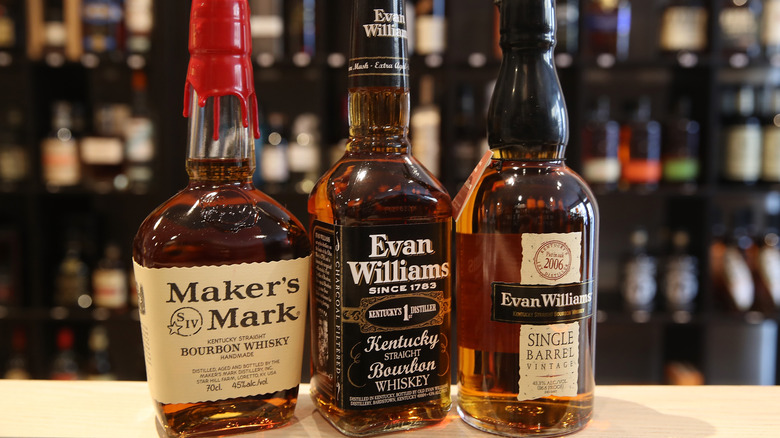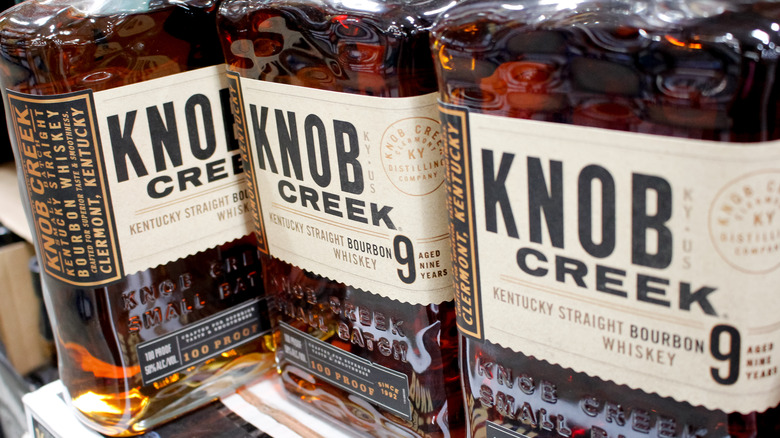The 2 Things A Bourbon Expert Checks The Label For Before Buying Whiskey
For whiskey lovers, perusing the kaleidoscope of light amber to darker mahogany spirits in the liquor store is an experience to relish. Seemingly endless choices fill the shelves, but only one will end up filling your glass. Understanding this, a touch of FOMO commonly creeps in. With so many options, how can you determine which one you'll enjoy the most? Which browns are best, and can you know if a whiskey is good just by looking at it?
To get answers, Foodie contacted Chris Blatner, an executive bourbon steward, founder of Urban Bourbonist, LLC, and the executive director of Bourbon Charity. One of the first two things Blatner searches for when picking out a whiskey is where it came from. He says, "I am always looking to see where the bourbon was made, the state of origin, as well as the distillery that made it. This will give you some clues as to the quality of the product."
Contrary to what some believe, bourbon does not have to be made in Kentucky. It can only be made in the United States, but different states distill it under varying conditions. Cold winters and hot summers in the Bluegrass State create an optimal environment for aging the liquor that accents its sweeter notes. States with more arid conditions experience different environments during distillation, which affects the interaction between spirit and barrel and therefore the final flavor profile. After you've learned where a whiskey comes from, Blatner also recommends taking a look at the age listed on the label.
How old the whiskey is matters
Most folks understand that the longer a spirit ages, the more flavor aging barrels impart to the liquid. "I'm also looking for an age statement," says Blatner. "Typically I want my bourbon to be at least 4 years old which is a minimum amount of time in a barrel to start taking on some nice flavors and transform into a quality product to drink."
While some whiskeys come with a no-age-statement printed on the label, many others proudly display how long the liquor has matured before it was released for distribution. Older varieties are not necessarily better whiskeys, but the aging process does help to soothe some of the harsher flavors detected in younger spirits. The precise amount of time it takes for bourbon and other similar liquors to reach peak drinkability varies, but many believes that bourbons are just right after maturing for between four and eight years.
The type of barrel the spirit ages in also affects the flavor profile, but no matter the kind of barrel is used to mature the liquor, it takes time to develop the delicate sweet notes expert connoisseurs long for when they take that first sip. While we're often urged to not judge a book by its cover, when it comes to whiskey, it would serve you well to take a gander at the label before making your final decision on what to take home.

